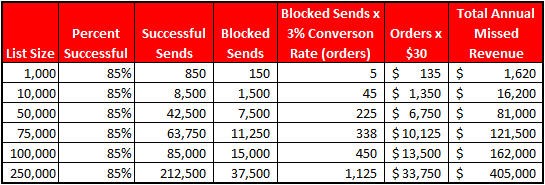Whether you’re considering implementing a new campaign or expanding a current one, your email marketing may be an overlooked investment full of opportunities.
First, you have to gauge your email marketing success.
Start by monitoring the health of your current campaigns and see which templates are performing the best. For example, which templates generated the most opens, clicks and unsubscribes. Other helpful campaign statistics you should be watching out for are conversion rate, revenue, average cart value and the price per email.
But we also think it’s worth looking at other aspects of email marketing that drastically affect your campaign. Specifically, we’re talking about the relationship between reliable data and dynamic content, how your emails are rendering, and your deliverability.
Dynamic Content
Dynamic content uses logic to pull in your subscriber information. The logic is used to personally address your subscriber, as well as for product recommendations, automation, localized content or determining which email template to send.
The logic is entirely dependent on the quality of your subscriber data. Up-to-date data ensures that your emails are as relevant and personalized as possible. No subscriber wants to receive a birthday message three months after their birthday, nor do they want an offer for a product they’ve already purchased.
When used successfully, the marriage between reliable data and dynamic content will facilitate the customer lifecycle, driving brand loyalty and generating more revenue. In its simplest form, the subscriber’s name in the subject line, rather than “Hello, Customer” is more engaging to a subscriber and thus, will make it more likely for the subscriber to open and read that email. An email template built with logic will pull in localized content and personalized product recommendations, both of which can influence subscribers to purchase or renew. Data and dynamic content help automate your campaign — determining which content block the subscriber receives and when.
Render Testing
What is email rendering or render testing?
Rendering engines read HTML code for individual email clients, but display the content differently. When tables break or images are slightly skewed, your emails may look sloppy to your subscribers.
We recommend creating render testing accounts for the major email clients, Gmail, Yahoo!, Hotmail, and AOL, and sending test emails to these accounts. Below are some common email client issues to note:
- Use inline tags not CSS in Gmail – Gmail strips head, body and style tags from emails.
- When aligning nested tables in Yahoo!, use ‘table-layout: fixed’.
- Hotmail and Outlook 2007/2010 won’t display background images, so apply a background color as a backup.
- GIFs don’t render in Outlook, and will only display as a static image.
When testing, be as thorough as possible and use different browsers, like Chrome, Firefox, Internet Explorer and Safari. You should also perform render tests on different operating systems, computers and mobile devices. Compare how your emails display and make any necessary adjustments.
If your HTML isn’t coded specifically for emails or your emails render poorly, email clients take note, and this may affect your deliverability – which affects whether your email gets to your subscriber’s inbox. Spammers don’t cleanly code their templates and don’t take the steps to render test for cleanly displayed emails.
Deliverability
It seems like email marketers are always discussing deliverability and its significance.
How well are your messages getting to your subscribers’ inboxes? Are they filtered to the spam folder or blocked entirely? If your subscribers aren’t receiving your emails, then they’re far less likely to make a purchase from your site.
Consider this scenario: You’re selling a product that’s $30.00 but only successfully sending to 85% of your subscribers. You’re missing out on revenue from the remaining 15%. If your list has 250,000 subscribers then you’re losing almost $34,000 a month, or $405,000 annually.

To make sure your emails are reaching subscribers’ inboxes and that your subscribers are actively engaging with your content, follow these industry best practices for deliverability:
- Use a double opt-in process to capture subscribers. The verification email sent to subscribers guarantees you have an active email address and a subscriber who wants to receive your emails.
- Remove bounces immediately or sort through sign-ups for spam trap email addresses. It’s also important to check that your subscribers are actively engaged. If you’ve noticed that some subscribers haven’t opened emails in 90 or more days, send one last attempt to reengage the subscriber, but then remove them from your lists.
- Be CAN-SPAM and Safe Harbor compliant – be sure to stay up to date on all email laws.
- Throttle your campaigns. If your emails aren’t throttled, ISPs may block your messages or blacklist your IP address, which will lower your IP sender score.
Keystone
It’s important to analyze all the various details of an email campaign when gauging the overall growth or success of an email marketing program. Aside from common email marketing KPIs, make sure you have reliable subscriber data, use dynamic content, and perform render tests.
Emily Oney is an Email Marketing Coordinator at cleverbridge